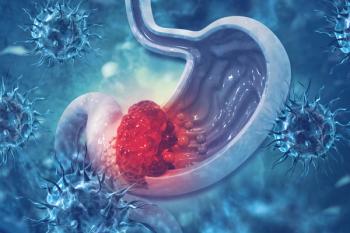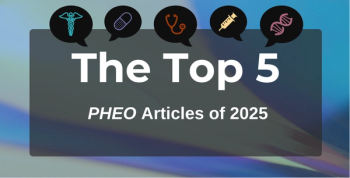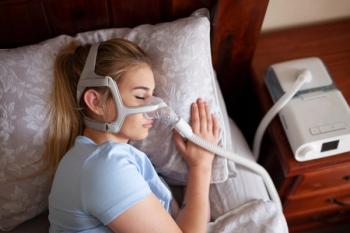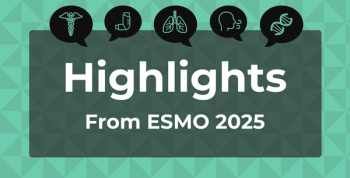
Alcohol and Cancer: Murthy’s Urgent Call
Key Takeaways
- Alcohol is linked to seven cancer types, including oral cavity, pharynx, larynx, esophagus, colorectum, liver, and breast.
- Ethanol's metabolism to acetaldehyde, a DNA-damaging agent, underpins alcohol's carcinogenic classification.
Alcohol was first identified as a carcinogen almost 40 years ago, by the World Health Organization's International Agency for Research on Cancer.
Surgeon General Vivek Murthy, MD, MBA, sent out a call last week for alcohol labels to now include cancer warnings, noting links to at least 7 cancer types.1
With the US Dietary Guidelines for Americans set for a forthcoming update—the most recent guidelines cover 2020 through 20252—action from Congress required to make the change, and previous research also showing potential links between “habitual to light moderate alcohol intake and lower rates of death, coronary artery disease, diabetes, congestive heart failure, and stroke,”3 there is renewed debate on both the benefits and risks of moderated drinking.1
In 1987, the World Health Organization’s International Agency for Research on Cancer first classified alcohol as a human carcinogen, citing the immediate metabolism of ethanol to acetaldehyde as a primary reason for it doing so.4 Per the CDC, this naturally occurring byproduct—which when artificially manufactured is used to produce industrial chemicals and as a solvent in the paper industry, among others5—can damage DNA via breaks and alterations and may have genotoxic properties, or the ability to induce change (mutation) within a cell’s genetic material.6
In his call to action, Murthy referred to research showing correlations between even the recommended guidelines of alcohol intake and the aforementioned 7 cancer types, which are oral cavity, pharynx, larynx, esophagus, colorectum, liver, and breast.1,4 His report also differentiates between absolute and relative risk, explaining that these differ within men and women and between the sexes as well.1 For example, at less than 1 drink per week, the absolute risk of breast cancer for a woman is approximately 11.3%, while for men, it’s close to 10% for an alcohol-related cancer. For 2 drinks per day, the risks jump to 15.3% and 13%, respectively.
Overall, alcohol is the third-leading cause of preventable death behind tobacco and obesity.1
“Alcohol is a well-established, preventable cause of cancer responsible for about 100,000 cases of cancer and 20,000 cancer deaths annually in the United States—greater than the 13,500 alcohol-associated traffic crash fatalities per year in the U.S.—yet the majority of Americans are unaware of this risk,” said Murthy
However, with a new presidential administration set for January 20 that has potential to include health leadership under
What is known is that the updated dietary guidelines will incorporate research from 2 scientific reviews on alcohol consumption. As the current guidelines were being drawn up, the authors consulted evidence showing alcohol to be a carcinogen, but ultimately omitted a potential recommendation to cap the daily limit at 1 standard drink for men—meaning that the daily limit of 2 drinks remained.1 However, the definition of a standard drink varies according to the amount of alcohol consumed, per the National Institute on Alcohol Abuse and Alcoholism; for example, 1 standard drink of wine (5 fl oz) contains approximately 12% alcohol; brandy or cognac (1.5 fl oz), 40% alcohol; and fortified wine (3-4 fl oz), 17% alcohol.8
Globally, just 47 countries have warning labels for alcohol, but only South Korea includes a specific warning of liver cancer.1 In 2026, Ireland will begin using labels on beer, wine, and liquor that warn of direct correlations between alcohol and fatal cancers.9
The current warning label for alcohol in the US only advises against pregnant women drinking and that alcohol impairs the ability to safely operate machinery or drive a car.10 It has remained unchanged since 1988.1 Murthy’s push also comes amid staunch pushback from the alcohol industry, which has historically rallied against labels that mention any link with cancer.
References
1. Rabin RC. Surgeon General calls for cancer warnings on alcohol. The New York Times. January 3, 2025. Accessed January 6, 2025.
2. US Department of Agriculture. Dietary guidelines for Americans, 2020-2025, 9th edition. Accessed January 6, 2025.
3. O’Keefe JH, Bhatti SK, Bajwa A, DiNicolantonio JJ, Lavie CJ. Alcohol and cardiovascular health: the dose makes the poison…or the remedy. Mayo Clin Proc. 2014;89(3):382-393. doi:10.1016/j.mayocp.2013.11.005
4. IARC Handbooks of Cancer Prevention Volume 20A: Reduction or Cessation of Alcohol Consumption: questions and answers. World Health Organization. Accessed January 6, 2025.
5. Acetaldehyde. Australian Government Department of Climate Change, Energy, the Environment and Water. Accessed January 6, 2025.
6. Current intelligence bulletin 55: carcinogenicity of acetaldehyde and malonaldehyde, and mutagenicity of related low-molecular-weight aldehydes. The National Institute for Occupational Safety and Health. September 1991. Accessed January 6, 2025.
7. US surgeon general issues new advisory on link between alcohol and cancer risk. HHS. News release. January 3, 2025. Accessed January 6, 2025.
8. Alcohol’s effects on health: what is a standard drink? National Institute on Alcohol Abuse and Alcoholism. Updated December 2024. Accessed January 6, 2025.
9. Alcorn T. Should alcoholic beverages have cancer warning labels? The New York Times. April 9, 2024. Accessed January 6, 2025.
10. Surgeon general call for cancer risk warning on beverages with alcohol. CBS News. January 4, 2025. Accessed January 6, 2025.
Newsletter
Stay ahead of policy, cost, and value—subscribe to AJMC for expert insights at the intersection of clinical care and health economics.







































